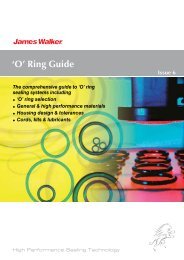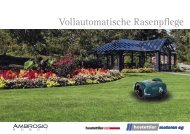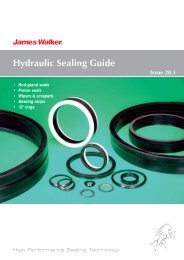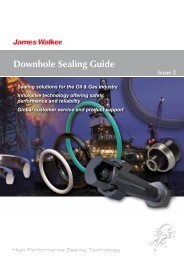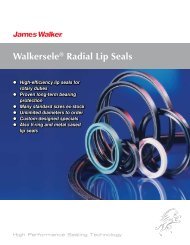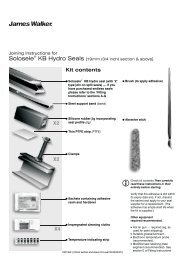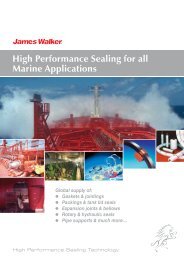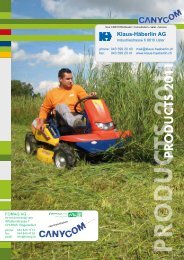Comflex® Rubber Expansion Joints Engineering Guide
Comflex® Rubber Expansion Joints Engineering Guide
Comflex® Rubber Expansion Joints Engineering Guide
You also want an ePaper? Increase the reach of your titles
YUMPU automatically turns print PDFs into web optimized ePapers that Google loves.
4.3 Installation<br />
4.3.1 Do not use sharp-edged tools. Additional gaskets<br />
are not required. The expansion joint rubber flange<br />
seals directly on to the pipe flange.<br />
4.3.1 Fasten the expansion joint at both flanges with e.g.<br />
2 threaded rods before loosening the lifting device.<br />
4.3.2 Insert all flange bolts and hand-tighten.<br />
4.3.4 Do not use plain washers on steel backing flanges.<br />
4.3.5 If at all possible, do not position bolt heads against<br />
the expansion joint bellows.<br />
4.4.6 Tighten flange bolts crosswise using a torque<br />
wrench with the specified torque over 3 intervals.<br />
4.4.7 Do not weld close to the rubber expansion joint. If<br />
necessary, cover the expansion joint with asbestos<br />
for protection against welding heat and flying<br />
sparks (sparks and temperatures above 60°C will<br />
damage the rubber parts!).<br />
Attention:<br />
When welding, steel-wire expansion joints<br />
throughout the whole piping system can be<br />
damaged by current leakage or electrical earthing.<br />
The anode and cathode of the E welding<br />
connection must always be on the same section<br />
of piping. (Not separated by the rubber expansion<br />
joint!).<br />
The bellows must not be painted or insulated.<br />
5. Pipe leading<br />
5.1 Anchor points and mountings<br />
Prior to filling the piping, it must be ensured that all<br />
anchor points and mountings are installed and<br />
operational. The bracing anchors must provide<br />
uniform support and must be adjusted to the<br />
existing piping.<br />
6. Final installation inspection<br />
6.1 Damage<br />
Check complete expansion joints for visible<br />
damage and in particular clean the gap<br />
between the steel backing flange and rubber<br />
bellows (remove foreign bodies, sand, etc.).<br />
6.2 Leakages<br />
Tighten bolts when possible leakages occur during<br />
pressure testing (1.3 x design pressure).<br />
7. Maintenance and Monitoring<br />
7.1 Before final commissioning, check the tightening<br />
torque of the flanged joints.<br />
7.2 <strong>Rubber</strong> parts must not be painted and should be<br />
kept clean. (Clean with water or soapy water).<br />
Keep the parts free from grease and oil.<br />
7.3 Inspection must be carried out minimum one week<br />
after commissioning. Tighten flange bolts with<br />
torque wrench. Inspections must be carried out<br />
after 1,4 and 12 months, then annually.<br />
7.4 Inspection criteria<br />
- External damage to rubber and bracing.<br />
- Deformation of rubber flange external diameter<br />
between the bolts (flange surface displacement).<br />
- Variations in the rubber bellows (blister formation,<br />
brittleness, fissures, hairline cracks)<br />
- Check bracing for excessive movement<br />
and misalignment.<br />
Assess corrosion and wear over the whole component.<br />
58<br />
To order or get further details, call your local contact shown on rear cover or listed at www.jameswalker.biz





